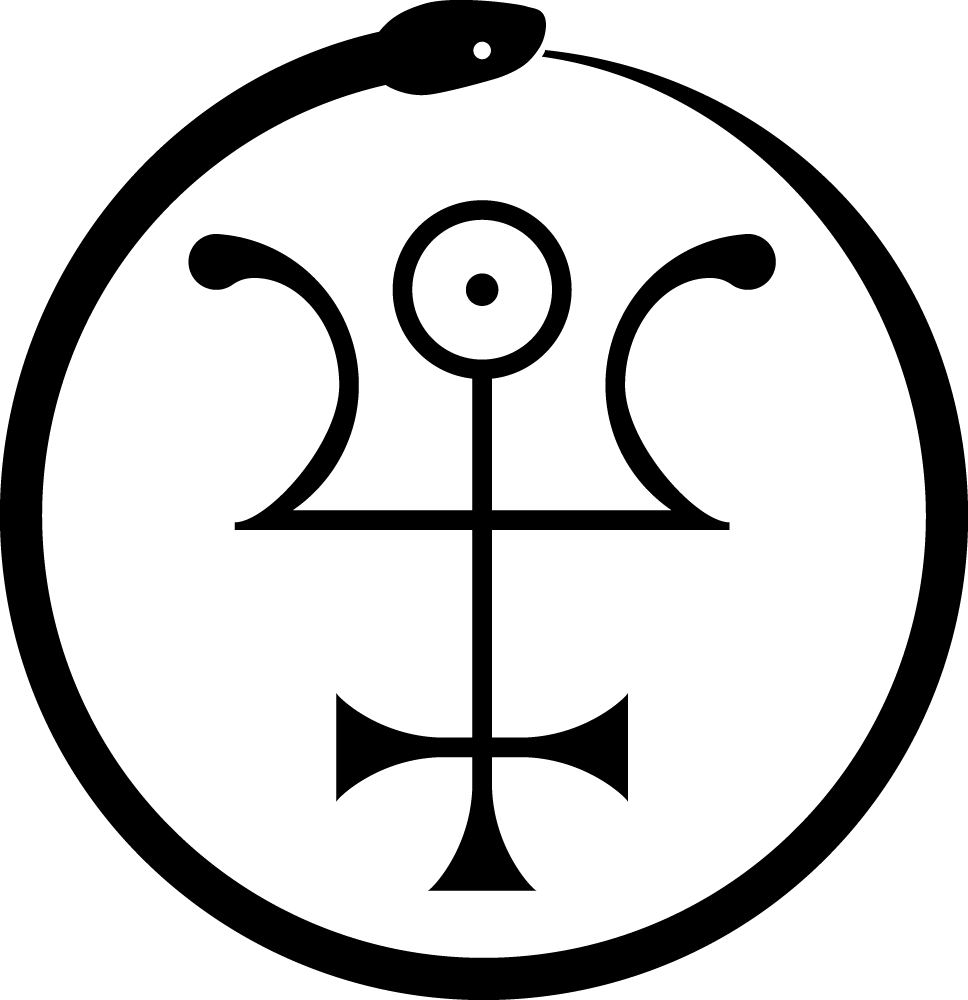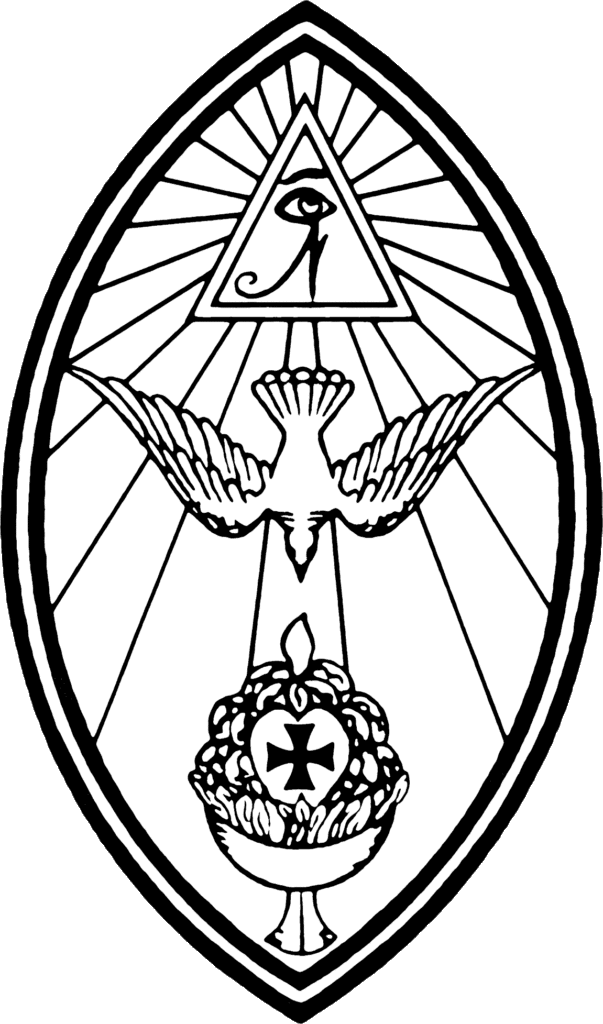Dr. Arnoldo Krumm-Heller
(1876 -1949 e.v.)
by Sabazius
(based on a conversation with Parsival Krumm-Heller on September 7, 1994 e.v., and subsequent correspondence)
Arnoldo (born Arnold) Krumm-Heller was born in Salchendorf, Germany on April 15, 1876. He left Germany at the age of 16 to join his brother at his brother’s farm in the interior of Argentina; but his brother failed to meet him at the station. He went to Chile where he obtained employment with some chemists. He began to travel extensively in 1896, first returning to Germany, then proceeding to France where he met Gérard Encausse (Papus) in about 1900. He also studied with Franz Hartmann during this time period, and thereafter considered Hartmann his primary teacher and influence. He attended the 1908 Masonic and Spiritualist Conference organized by Papus in Paris; and was given authority at that conference to work the Martinist/R.C./Gnostic milieux in Latin America and Spain. He received a document from Papus dated March 13, 1908 appointing him “Délégué Genéral pour le Chili, Perou et Bolivie” of the Martinist Order. He also received, for no fee, a document from Theodor Reuss dated March 15, 1908 appointing him “General Gross-Representanten für Mexico” of the Sovereign Sanctuary of the Antient and Primitive Rite of Memphis and Mizraim. He may have accompanied Papus on one of his trips to St. Petersburg. Some time between 1910 and 1920, he was consecrated in the Gnostic Church by Dr. H.C. Peithmann. In 1910, he began to study medicine in Mexico under Hartmann’s tutelage and at conventional medical schools. He adopted Mexico as his fatherland, and even turned down an offer of U.S. citizenship from General Pershing when Pershing was in Mexico chasing Pancho Villa in 1916. Some time between 1910 and the beginning of WWI, Krumm-Heller founded Fraternitas Rosicruciana Antiqua (F.R.A.) as a vehicle to accomplish his charge to promulgate the esoteric work in Latin America. He also began work within Iglesia Gnostica, developing ecclesiastical rituals influenced by Peithmann’s German liturgies and by Aleister Crowley’s Gnostic Mass.
In 1920, he returned to Germany and bought a printing business there, which he used to finance his lectures and publications. He was strongly opposed to the collectiion of money for any services connected with esoteric studies.
While in Germany, he bought a home in Marburg, where his sister ran a Lutheran orphanage. Some time during the 20’s he met Rudolph Steiner, the founder of the Anthroposophical Society. In 1925, Krumm-Heller published an article on Biorhythms; long before they were recognized by the orthodox scientific community.
Krumm-Heller met with Aleister Crowley on several occasions and, according to his unpublished memoirs, held him in high esteem. He may have visited Crowley in Cefalú. On June 7, 1930, Crowley, Karl Germer and Karl’s first wife Cora met with Krumm-Heller at Krumm-Heller’s house in Berlin, Germany. Parsival, then 5 1/2 years old, was there. Parsival remembers being terrified at first at the presence of “Therion.” Crowley asked Krumm-Heller why he had named his son Parsival, and Krumm-Heller responded that Parsival had been born at the foot of Monsalvat in Spain. Crowley, who spoke in fluent Spanish to Parsival’s father, spoke briefly to Parsival in broken German. Parsival recalls that Crowley’s portrait was one of the five that hung in the F.R.A. lodge, the others being of Reuss, Papus, Hartmann, and Steiner.
In 1936-37, a pamphlet titled “Der Judenkenner” was circulated, in which Krumm-Heller and the late Theodor Reuss were denounced as agents of the “Judaeo-Masonic Conspiracy”. Parsival recalls the circulation of ths pamphlet to their neighbors as a particularly frightening experience, but Krumm-Heller seemed relatively unconcerned for his safety until the last days of the war. The Nazis confiscated Krumm-Heller’s library, but did not destroy it. Krumm-Heller and his son left Germany for America in 1937. The father returned to Germany in 1938, leaving Parsival in Mexico to attend school. Parsival returned to Germany in 1940. Carlotta, Krumm-Heller’s second wife and Parsival’s mother, died in 1945.
Krumm-Heller remained in Germany throughout most of WWII, at his home in Marburg. Marburg was a relatively tolerant university town and Krumm-Heller lived there in precarious safety even though he passively resisted the Nazis by such acts as flying the Mexican flag above the required Nazi flag in front of his house. During the war, Krumm-Heller maintained a baseline level of contact with his F.R.A. bodies in South America via mutual contacts in Sweden. When the Americans marched into Marburg, Krumm-Heller greeted them enthusiastically, and was appointed by them as the local director of the Red Cross, with which organization he had long been associated. As soon as the war was over, he immediately re-established full contact with F.R.A. in South America. Krumm-Heller died in Marburg in 1949 surrounded by his family and friends. He was cremated in his Red Cross uniform.
Krumm-Heller was survived by his third wife Marie-Louise von Dieringshoffen, and by six children: one son by his first wife in Chile; two sons (including Parsival) and two daughters by Carlotta, who was known in F.R.A. as “Hermana Vileda”; and one illegitimate son who appeared in Mexico around 1950 as an esoteric author and lecturer under the name Arnoldo Krumm Heller Mejia. Krumm-Heller’s gravestone is in the posession of a son of Guadelupe in Northern Germany.
While Krumm-Heller held an O.T.O. charter from Reuss, he always kept his O.T.O. work separate from his F.R.A. work. He never established any O.T.O. groups, initiated anyone into O.T.O. or appointed any O.T.O. officers; preferring instead to work within the F.R.A. context.
-
Spain: D.R. Ballester (d. 1980)
-
Venezuela: Anna Delia Gonzales
-
Brazil: Dr. Albert Wolf (director of a health resort in Germany. His wife was a physician in São Paolo. After the war, Wolf lived with Krumm-Heller in Marburg. He was the only one of the successors to receive the Gnostic Church succession as well as the F.R.A. succession. He died shortly after Krumm-Heller’s death.)
-
Mexico: Mario Alvarez
-
Cuba: Johannes Muller Rider (Frater Thelemako)
-
Argentina: ? Arquia
-
Philippines: [Parsival could not recall the name]
Israel Rojas Romero, though he had been a student of Krumm-Heller, was never appointed head of F.R.A. for Colombia by Krumm-Heller.
Eduard Munninger’s claim to have been appointed by Krumm-Heller as head of F.R.A. for Austria is false: Krumm-Heller never established or authorized any F.R.A. activity in Europe except in Spain. Krumm-Heller considered F.R.A. to be for the Spanish and Portuguese-speaking world only.
Krumm-Heller initially gave H. Spencer Lewis authority to operate F.R.A. in the US. However, he later severed his ties with Lewis because he came to believe that AMORC was being operated as a business, rather than as a charitable fraternity. He later established ties with R. Swinburne Clymer, head of the P.B. Randolph derived Rosicrucian Fraternity in Quakertown, Pennsylvania.
Original Publication Date: 1997

